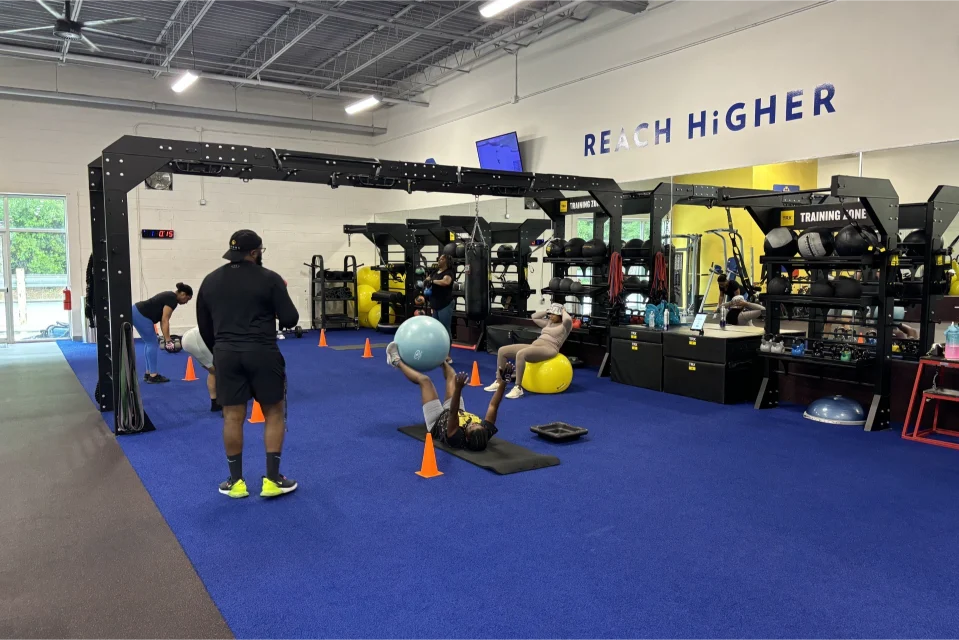When combined with jump rope exercises, HIIT not only maximizes cardiovascular benefits but also adds a fun, dynamic element to the workout routine. Here you’ll see how jump rope, a simple tool, can be integrated into HIIT to create effective workout sessions suitable for all fitness levels.
Benefits of skipping rope combined with HIIT workout
When done in a high-intensity interval training setting, jump roping enhances both physical and mental health in several ways:
- Cardiovascular health: Alternating high-intensity jump rope sessions with rest or low-intensity periods helps improve heart health and increases VO2 max.
- Fat loss: This combination burns a significant number of calories in a short time, promoting rapid fat loss.
- Muscle tone: Regular jump rope sessions strengthen the calves, quads, and hamstrings while engaging the core and arm muscles.
- Coordination and agility: The rhythmic nature of jump roping enhances coordination, balance, and agility.
- Convenience and accessibility: Jump ropes are affordable, portable, and can be used almost anywhere, making this workout highly accessible.
Essential gear for jump rope HIIT
Selecting an appropriate jump rope is crucial for an effective HIIT session:
- Material: Options include PVC, leather, or beaded ropes. PVC ropes are lightweight and fast, ideal for beginners and speed workouts.
- Length: To determine the ideal length, stand on the center of the rope and pull the handles upward. The handles should reach just under your armpits.
- Handle type: Look for handles that fit comfortably in your hand, with a grip that prevents slipping during exercise.
Pre-workout preparation
Proper preparation can significantly enhance the effectiveness of your workout and reduce the risk of injury. Here’s what you should focus on before beginning your jump rope HIIT routine:
- Hydration: Drink water throughout the day leading up to your workout, and have a water bottle handy during your session.
- Nutrition: Eating a light snack, like a banana or a small yogurt, 30 to 60 minutes before your workout can provide the energy needed for the intensity of HIIT.
- Mindset: Prepare mentally by setting clear goals for your session. Whether it’s to keep up the pace, increase the workout duration, or simply to stay consistent, a clear mindset will help you push through the challenging moments.
Warm-Up exercises
A proper warm-up increases your heart rate and loosens up your muscles and joints:
- Dynamic stretching: Focus on movements like leg swings, arm circles, and gentle jumping jacks to get your body moving.
- Low-intensity jump rope: Start with a slow, steady pace to get the feel of the rope and gradually increase your speed to raise your heart rate.
Jump rope HIIT workout routines
Jump rope HIIT can be tailored to fit any fitness level, from beginners to advanced athletes. Here are three structured routines to get you started:
Beginner-friendly routine
- Warm-up: 5 minutes of gentle jumping at a slow pace.
- Workout:
- 30 seconds of basic jumps at a moderate pace.
- 30 seconds of rest.
- Repeat 8 times.
- Cool-down: 5 minutes of stretching, focusing on the legs and lower back.
This routine is a safe choice if you want to lift weights afterward. And if you’re unsure how to mix these two exercise types, we’ve answered the question on doing HIIT before or after weights.
Intermediate routine
- Warm-up: 5 minutes incorporating basic jumps and side swings.
- Workout:
- 40 seconds of alternate footstep jumps at a moderate pace.
- 20 seconds of high knees.
- 30 seconds of rest.
- Repeat 10 times.
- Cool-down: Include dynamic stretches and some light yoga poses to enhance flexibility.
Advanced routine
- Warm-up: 5 minutes mixing double unders and side swings.
- Workout:
- 1 minute of double unders or speed jumps.
- 30 seconds of boxer step.
- 30 seconds of rest.
- Repeat 12 times.
- Cool-down: Focus on deep stretching and possibly foam rolling to aid muscle recovery.
If you need more assistance with your fitness journey and you’re located in Fayetteville, make sure to visit HiTone Fitness. Our personal trainers can develop a workout plan that will put you on the path to success.
How often to do a jump rope HIIT workout?
For most people, incorporating jump rope HIIT sessions 3-4 times per week is optimal. This frequency allows for sufficient recovery between sessions while maintaining the intensity required to achieve significant cardiovascular and metabolic benefits. It’s crucial to listen to your body and adjust based on your recovery needs and other physical activities.
What is the optimal length for a jump rope HIIT session?
A jump rope HIIT session should last between 20 and 30 minutes, including warm-up and cool-down. The key to HIIT is maintaining high intensity during the ‘work’ phases, so even shorter sessions can be highly effective if performed vigorously.
Final thoughts
Jump rope HIIT is an incredibly efficient and versatile workout that can quickly boost your fitness, aid in weight loss, and improve your overall health. By adjusting the intensity and duration of the workouts, jump rope HIIT can accommodate anyone from fitness novices to seasoned athletes. With regular practice, you’ll notice improvements not only in your physical condition but also in your coordination and mental resilience. Remember, consistency is key, so pick up that rope and start jumping your way to a healthier life!







